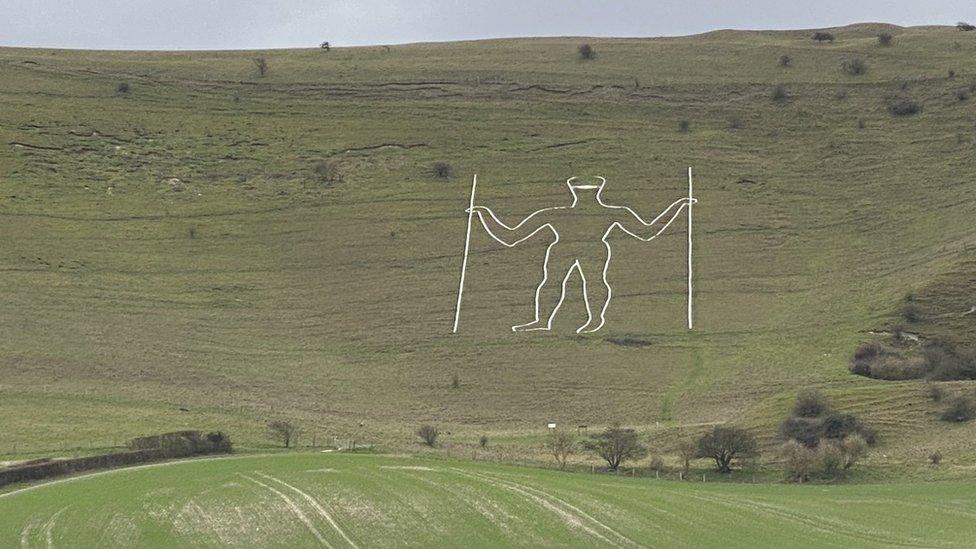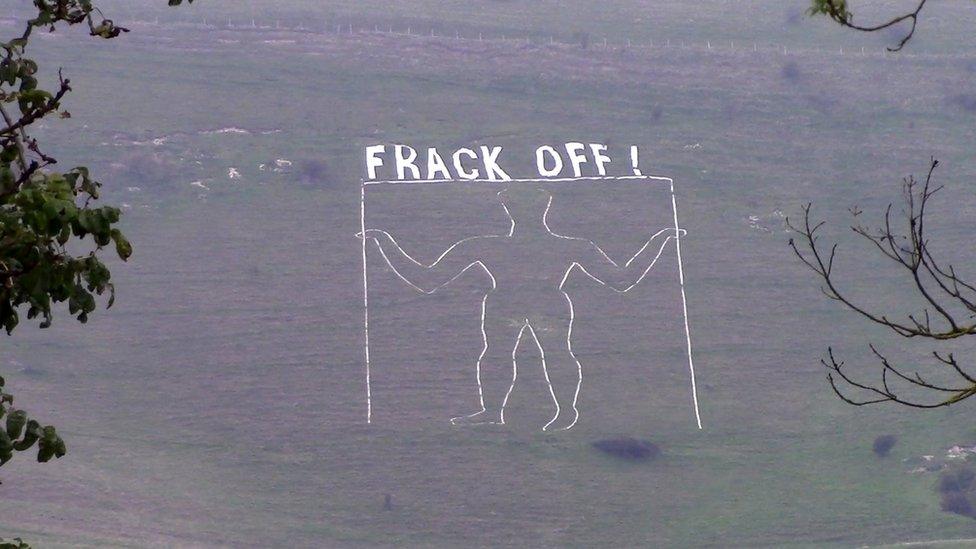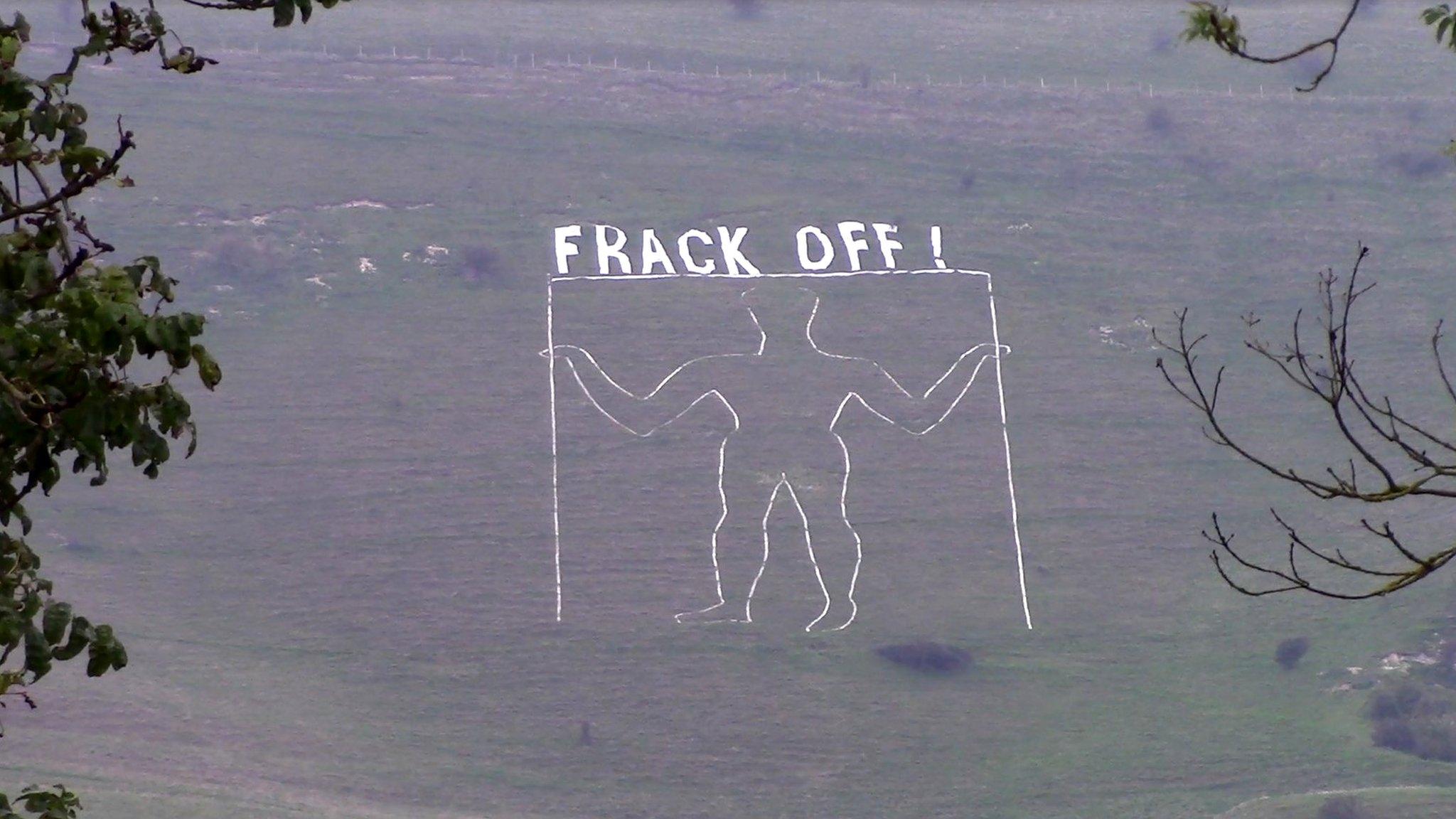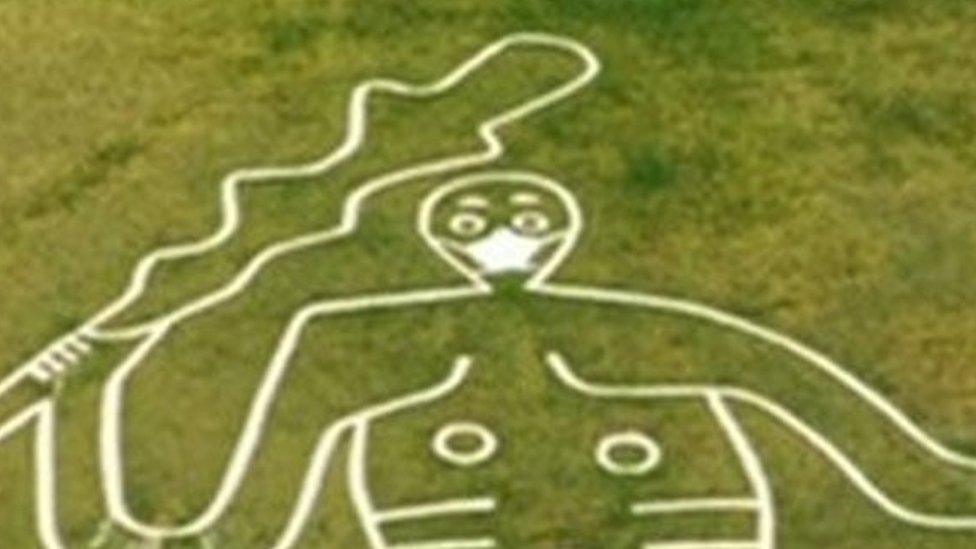Long Man of Wilmington carving given face mask makeover
- Published

The Long Man of Wilmington, said to date back to 1710, now has a mask
A giant carving of a figure on the chalk South Downs has had a mask painted over its face.
The addition of the face covering to the Long Man of Wilmington, a protected archaeological site, was discovered on Tuesday, Sussex Police said.
The force said the landmark near Polegate had been defaced by vandals.
Sgt Tom Carter said that while it "may have been perpetrated for humour...the actions that have been taken are unacceptable".
On Twitter, Jeremy Christey posted a picture of the , externalcarving and wrote: "The Long Man of Wilmington, Sussex has inherited a rather slender mask. Good man. To be safe, he probably needs to pull it down a touch tbh..."
The 235ft (72m) figure on the hillside above the village of Wilmington can be seen from the A27 which passes alongside it.

The figure was targeted in 2015 by anti-fracking campaigners
Sgt Carter said the carving is protected by law as a Scheduled Ancient Monument for its historical significance.
He added: "On top of this, the figure is well known and enjoyed by the local community, and this criminal damage is an affront to those who work to maintain this heritage asset for the enjoyment of all."
Mark Harrison, from Historic England, said the organisation was working with police to identify the offenders, and would provide advice and guidance to the owners on restoring the carving.
Simon Dowe, chief executive of Sussex Archaeological Society, said: "We're incredibly saddened that someone has deliberately damaged the Long Man of Wilmington, this Scheduled Ancient Monument which has been in place for centuries."
He said the society was working closely with police and had already sent a team to try to rectify the damage.
The monument was given to the Sussex Archaeological Society, external by the Duke of Devonshire in 1925.
According to the society, the Long Man has baffled experts for many years with theories about its identity ranging from a fertility symbol to an ancient warrior.
During Word War Two, the outline of the figure was painted green to blend in with the hillside, as it was feared German pilots were using it as a landmark.
In 2015, it was targeted by anti-fracking campaigners.

The figure is carved into the chalk South Downs hills
Related topics
- Published16 October 2015

- Published1 June 2013

- Published25 April 2020
